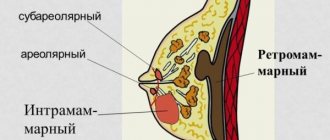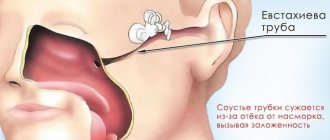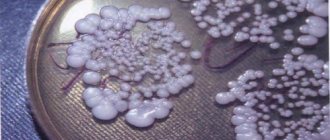Accumulation of mucus in the throat is an unpleasant but treatable condition. The main thing is to accurately determine the cause of this symptom and eliminate it. That is, a condition in which mucus collects in the throat is not an independent diagnosis, but one of the manifestations of the underlying disease. Phlegm in the throat can accumulate not only due to inflammatory processes in the nasopharynx. There are other reasons not related to ENT organs. Which? Read our new article.
The accumulation of mucus in the throat is a very unpleasant condition, especially in cases where it accumulates constantly, and the person cannot leave the feeling that there is something in the throat.
In medicine, there is even a special term that is used when mucus constantly flows into the throat from the nasal cavity - postnasal drip. Essentially, it's the same runny nose, but in reverse.
When mucous discharge from the nose does not come out, but inward, it irritates the walls of the pharynx and causes a person to have an irresistible desire to frequently cough up and swallow phlegm. This state, of course, cannot be called pleasant. To get rid of it, you first need to determine why mucus accumulates in the throat, which system of the body has failed, and carry out proper treatment of the disease. Unfortunately, you won’t be able to do this yourself. We need the help of a qualified otolaryngologist.
So why does mucus accumulate in the throat? The causes and treatment of this condition are the topic of our new article.
Symptoms
Mucus or snot is accompanied by certain symptoms. Among them the following stand out.
- Runny nose.
- There is a feeling of a lump in the throat.
- Discomfort when swallowing.
- The urge and the cough itself.
- Chills and aches.
- Sometimes headaches.
There is no need to worry if you experience a mild feeling of mucus in your throat. How to get rid of it in this case? Simple methods will help (rinsing, taking herbal decoctions, inhalation, etc.). After all, sputum is a filter that protects against further entry of microbes into the body. This is how the immune system reacts to the increased intake of viruses and microbes inside.
Which doctor should I contact?
There is a whole list of doctors you can contact if you experience sputum, it all depends on the symptoms and area of the disease:
- ENT. Mucus is secreted for a long time in diseases such as pharyngitis, rhinitis, tonsillitis. In this case, only an ENT specialist can help;
- allergist. For people who are familiar with allergies, the appearance of sputum will also not be a surprise, but you need to get rid of allergic triggers;
- gastroenterologist With inflammation of the gastrointestinal tract, upward release of gastric mucus can often be observed. This occurs with gastritis, stomach ulcers and esophagitis;
- pulmonologist This specialist will help with bronchitis, pneumonia and tuberculosis.
Causes
When looking for ways to get rid of mucus in the throat, you should first figure out exactly what caused it. Snot speaks of some recently suffered illnesses that have already receded. However, foci of infection still remain in the body. The nasopharynx has cilia that direct mucus to the mouth. Overnight it accumulates and turns into a lump. You can get rid of it by coughing.
So, snot appears in diseases such as:
- sinusitis;
- sinusitis;
- rhinitis;
- pharyngitis;
- adenoiditis;
- tonsillitis.
If coughing fails to get rid of it, mucus accumulates in the bronchi and lungs. This leads to bronchitis and pneumonia. How to get rid of constant mucus in the throat? This issue is of concern to patients with bronchial asthma and lung diseases.
The following factors are common causes of sputum.
- Colds - to eliminate viruses, sputum secretion increases. This is how the protection of the respiratory system is built. Then particles of infections enter the snot.
- Allergy - a protein substance is released when an allergen hits.
- Hot food - it promotes increased mucus production.
- In addition, phlegm appears when crying, stress, overheating or, conversely, hypothermia.
Of course, you need to think about how to get rid of it if there is a lot of mucus in your throat. At the same time, it is necessary to understand and treat the chronic disease as a result of which it was formed.
Snot is also felt when the contents of the stomach enter the esophagus. Pregnant women feel this at the end of their term.
It is not difficult to understand how to get rid of mucus in the throat for those who like too hot or, conversely, cold food, as well as when working in harmful conditions or having bad habits (for example, smoking). By removing these factors, you will see that the phlegm will disappear on its own.
The color of the mucus can help to correctly diagnose the disease.
Mucus in the throat: causes
Causes of mucus in the throat
The human nasopharynx is covered with a special mucous layer, on which a small amount is located. If bacteria or microbes enter the body, its number increases. In this way, the body protects itself from the spread and penetration of bacteria into cells.
The main reasons for the appearance of mucus in the throat include:
- Colds, as well as flu and ARVI, during which the patient feels unwell.
- An inflammatory process in the nasal cavity, due to which mucus gradually descends into the throat, causing the person even more discomfort. Sometimes mucus begins to accumulate in the throat even before visible snot appears. In this case, the person will simply feel an unpleasant lump that cannot be swallowed or rinsed.
- Long and frequent use of vasoconstrictor drugs. As a result, the mucous membrane dries out and gradually swells. And during swelling, mucus flows down the nasopharynx.
- Fungal infections that provoke increased mucus secretion and also prevent its removal through the nose.
- Allergy. Almost always, allergies are accompanied by swelling in the nasopharynx. And therefore, a person can often clear his throat, and the cough will be wet.
- Poor nutrition, namely abuse of spicy foods.
- Smoking and drinking alcohol in large quantities, which burns the mucous membranes, causing more mucus to be produced to protect the cells.
- Laryngopharyngeal reflux, during which the contents of the stomach are thrown back into the throat.
Depending on what causes the mucus in the throat, the treatment will depend.
Green and white sputum
When green snot is released, causing a lump to form in the throat, it is said to be a lung abscess. This disease is characterized by a purulent process, along with which chest pain, chills, and coughing up blood are felt. If the disease is not neglected, then recovery will be easy. Otherwise, the disease becomes chronic, and in rare cases even leads to death.
If a white substance is released when coughing, it indicates a fungal infection or tuberculosis. Fungus in the bronchi or throat mucosa also occurs as a result of long-term treatment with antibiotics and other drugs that weaken the immune system. White mucus released in small quantities when coughing indicates tuberculosis. And with a mass with bloody streaks, it signals bleeding in the lungs.
Liquid expectoration indicates a viral infection or an allergic reaction. The latter appears as a result of a reaction to dust, pollen, vapors and household chemicals.
Causes of the disease
Phlegm is a special secretion that is formed from water, saliva and nasal mucus. It begins to be released when pathological conditions of an infectious or bacterial nature arise in the body.
Constant mucus in the throat, with or without a cough, can be caused by various reasons, the main ones being:
- respiratory system diseases,
- tuberculosis,
- oncological diseases of the respiratory system,
- problems in the functioning of the heart, blood vessels and gastrointestinal tract,
- allergic reactions,
- unhealthy lifestyle (constant smoking or drinking alcohol),
- constant consumption of food and drinks that irritate the throat mucosa,
- living in an unfavorable environment,
- work in unfavorable conditions for the respiratory system.
Drug treatment
Those who are looking for ways to quickly get rid of mucus in the throat should immediately contact an otolaryngologist. After examining the tests taken, the correct treatment is prescribed. At the same time, sometimes it is enough to reconsider your lifestyle and give up bad habits.
Let's first consider pharmaceutical drugs that remove mucus. For this problem, expectorant medications are taken. Among them are plant-based (Solutan, Pectusin and others) or synthetic (Lazolvan, Ambroxol and others).
Cough medications should not be taken at this time, as they will only complicate recovery. After all, such drugs block the removal of sputum and provoke complications, resulting in a chronic disease.
But expectorants and mucolytic drugs thin the mucus and clear the breath. At the same time, they take medications that strengthen the immune system. Then recovery comes even faster. This is what doctors say about the rules for taking medications.
But there are much simpler ways to get rid of mucus in the throat. Then you don’t need to buy a large number of expensive medications. Traditional medicine has been successfully treating both this and other diseases for more than a century.
Folk remedies
Let's look at a few of the many recipes that have been and continue to be used to treat people.
Aloe will help reduce phlegm. The fresh leaf is crushed and mixed with a small spoon of honey. One part of the mixture is eaten in the morning, and the second in the evening. The very next day you will feel relief.
Calendula will help get rid of the lump. Fresh petals are washed and dried. Then they are mixed with honey and eaten like that.
Sputum is successfully removed with propolis. To do this, grind it to a powder and add it to a glass of cool water. After waiting a little until the wax floats and the propolis is at the bottom, the latter is separated, filtered and filled with alcohol. Then cover tightly with a lid and leave for a week. In this case, the product is shaken daily. After a week, filter the tincture, mix one part with two parts of peach oil and lubricate the nose and mouth once. Treatment lasts two weeks.
Another effective recipe is prepared with herbs. Take one large spoonful of eucalyptus, sage and chamomile and add 500 milliliters of hot water. The mixture is brought to a boil and cooked for a quarter of an hour over low heat. After cooling until warm, add a large spoonful of honey, a pinch of citric acid and mix thoroughly. Gargle with the medicine several times a day.
Here are a few more effective recipes for when mucus in the throat is not swallowed. How to get rid of it?
- Add a little sugar to fresh cabbage juice and drink three times a day.
- Pumpkin juice is taken in small sips, preheated.
- They drink drinks with the addition of raspberries, sea buckthorn, cranberries, lingonberries, black and red currants.
Decoctions and infusions for rinsing
A solution made from sea salt will remove the uncomfortable feeling: 20–40 g of dry component per glass of warm water. Stir and rinse 3 to 5–7 times a day. The product washes out phlegm and soothes the mucous membrane, removes soreness.
Instead of sea salt, use table salt, which is mixed with soda. Place a teaspoon of each ingredient in 300 ml of warm water, add 2-4 drops of iodine. The last component is contraindicated if the solution is intended for a child.
Young patients are treated with herbal decoctions, for the preparation of which they use:
- eucalyptus leaves;
- dried chamomile flowers;
- pine or oak bark;
- calendula.
Pour a cup of hot water over a spoonful of any plant and simmer in a water bath or moderate heat for about 20 minutes. When the product has cooled, filter it and gargle with the resulting tea.
Ginger treatment
Was the phlegm caused by sore throat or tonsillitis? Ginger will come to the rescue. The ground root has antiseptic properties and soothes inflammation, reducing the amount of mucus. The composition of the medicinal ginger drink includes:
- cinnamon extract;
- ground ginger;
- carnation.
Place a pinch of each component in a cup of water. Boil and wait until the liquid cools to 40–37 degrees. Dissolve 20 ml of linden honey and lemon juice in the drink. Take the medicine 4 times a day, approximately 50–100 ml.
The second remedy for phlegm in the throat is prepared from:
- white pepper;
- ginger powder;
- licorice root;
- Sahara.
Combine the plant components in equal proportions and, diluting with a glass of water, bring to a boil. Dissolve sugar and 1-2 tsp in a hot drink. honey Use the mixture 4-5 times a day to enhance mucus secretion and destroy the infection.
If phlegm is one of the symptoms of pharyngitis, milk will help. Heat it and put 10 g of ginger powder, 15 turmeric into the drink and boil. Add 30–50 g of honey to milk that has cooled to room temperature and drink in small sips. Take 2-3 glasses of medicine per day.
The inflammatory process will be stopped by the remedy for which you will need:
- 20 g fresh ginger root;
- 30–40 green tea;
- 2–3 sprigs of mint;
- 300 ml water.
Cut the ginger into slices, put it in a saucepan and put it on the stove. After boiling, remove the decoction and add tea leaves and mint to the hot drink. The product is divided into 2 doses. Drink slightly warmed, without adding sugar or honey.
Recipes with onions and radishes
Is the cause of sputum a cold? Is it accompanied by a dry or wet cough? Do the symptoms indicate the development of bronchitis? Black radish will ease the suffering of the patient:
- Clean the root crop from dirt and rinse under the tap.
- Remove the tail, cut off the top, but do not throw away.
- Carefully remove the center of the radish with a spoon or knife.
- Stuff the root vegetable with honey and cover with the cut off top.
- After 3-4 hours, the vegetable will release juice. The sweet liquid must be drained into a separate container.
Take a tablespoon of the radish and honey drink 20–30 minutes after eating. An easier way to get the medicine:
- Peel and grate the washed root vegetable.
- Add a few spoons of honey and mix thoroughly.
- When the juice appears, separate it from the pulp and drink.
Onion broth will also remove phlegm from the throat. Phytoncides contained in vegetables have antibacterial properties and destroy foci of infection. Peel and finely chop several medium-sized onions. Place on the stove, fill with water, and bring to a boil. Cook the onion broth for 50–60 minutes. Before drinking, add 1-2 tablespoons of sugar to the drink.
Herbs and fruit juices
The inflamed mucous membrane of the nasopharynx is lubricated with peach oil, which is mixed with an alcohol tincture of propolis. For 2 parts of the first component you will need 1 part of the second. Stir and apply with a cotton swab or gauze pad to the tonsils and nasal passages.
Substances contained in pine buds calm inflammation and remove mucus from the bronchi and throat. Take only dried material; fresh preparations contain too many resins. Steam a spoonful of pine buds with a cup of hot milk or water. Leave for at least 2 hours, take 30 ml of drink 2 to 4 times a day.
Pine buds are added to mixtures for inhalation. They disinfect the nasopharynx and promote mucus removal.
A mixture of aloe and honey will remove phlegm from the throat:
- Select the juiciest and oldest leaf of the plant, wash and grind.
- Mix the green pulp with a tablespoon of honey.
- Dissolve the resulting product after sleep and before going to bed, 30-40 g.
The medicine removes redness and itching and is recommended for sore throat, colds, tonsillitis and sinusitis.
A mixture of dried calendula flowers and honey is useful. At 2 tbsp. l. plants 1 tsp. bee product. Chew the pulp thoroughly and do not drink it. Take calendula after breakfast and dinner. After 30–40 minutes you are allowed to drink water or tea.
It is useful to eat a tablespoon of honey three times a day, diluted with lingonberry or cranberry juice in a 1 to 1 ratio.
An effective rinse solution includes:
- sage;
- chamomile;
- eucalyptus.
Combine herbs and pour boiling water. You will need 40 g of each plant component and 0.5 hot liquid. Pour into a thermos and wait 3 hours. Place 20 g of honey and a pinch of citric acid in a glass of strained drink. Stir, drink 50-60 ml, gargle with the remaining liquid. Repeat the procedure 2 to 5 times a day until sputum ceases to be produced.
Ripe pears have anti-inflammatory properties, so if you have a sore throat, you should eat 2-3 fruits daily. Drink with heated mineral water and honey.
Inflammation will be removed by carrot juice, which contains vitamin A. A spoonful of honey is added to the drink to enhance the antiseptic effect, and 10-20 ml of vegetable oil, which improves the absorption of retinol.
For phlegm, fresh plantain is recommended. Wash the leaves, crush or grind them. Combine plantain pulp with honey, take the components in a 1:1 ratio. Place the workpiece on minimum heat. Make sure it doesn't boil. Simmer for 4 hours, eat 20 g 40 minutes before meals. Use homeopathic medicine for 2 weeks, taking three servings of the pulp per day.
How to treat?
What is the best thing to do when mucus appears in the throat? How to get rid of it using folk remedies? Not hot, but warm drinks will help in this case. So, lemon tea has an excellent effect. It can be purchased ready-made or made independently. In the latter case, two teaspoons of juice are squeezed out of the lemon and poured into weak tea. It’s good to add high-quality honey to the drink.
Another universal remedy in the fight against phlegm is chicken broth.
In addition, ordinary water becomes a truly effective remedy. The latter should be drunk in large quantities.
Spicy foods will help get rid of mucus quickly. It sharply punches the nose and clears the snot. Of course, for stomach diseases, although such a remedy will get rid of mucus, it will ultimately do a disservice to the body. But the cracker will not harm the body in case of gastrointestinal diseases. Meanwhile, this is an effective remedy that will scrape phlegm from the throat and send it safely to the stomach.
Rinsing will help alleviate the patient's condition.
How to get rid of mucus
There are several effective ways to reduce the amount of mucus in the throat:
Rinsing.
To rinse, you must use sea or salt water (in the latter case, it is important to use a moderate amount of salt so as not to increase dryness). To prepare the solution, you will need to dilute half or one teaspoon of salt in a glass of water and add a little soda. You need to gargle several times daily.
Steam.
To clear your nasal passages and minimize the amount of phlegm in your throat, you need to breathe in steam. To do this you will need:
- fill a pan or deep bowl with boiled hot water;
- the water temperature should not exceed 70 degrees, so as not to burn the mucous membrane;
- for better penetration of steam into the nasal passages, cover yourself with a towel and lean over the pan (bowl);
- take a comfortable position and breathe in the steam;
- To enhance the effect, you can add a few drops of essential oil of lavender, sage, fir, cedar or eucalyptus to the water. These oils help clear the air of allergens and prevent infections from entering the respiratory tract.
You can also breathe warm steam using a special inhaler.
Nasal rinsing.
You can rinse the nasal passages using a spray (sold in a pharmacy) or a special small teapot and a syringe without a needle. To prepare the solution you need:
- dissolve one teaspoon of salt in a glass of water (distilled);
- tilt your head to one side over the sink, place the spout of the kettle in the upper nostril and slowly pour the solution so that the liquid flows out of the lower nostril;
- Repeat similar steps on the other side.
Ginger.
Since ancient times, ginger has been used to prevent colds, as it has antiviral and anti-inflammatory properties. In addition, scientists have proven that ginger tea is especially useful, as it effectively fights diseases of the upper respiratory tract. To prepare this tea you will need:
- grate a piece of ginger (3 cm will be enough);
- pour boiling water over the resulting slurry;
- leave for ten to fifteen minutes.
Ginger tea should be drunk two to three times a day; to improve the taste, you can add honey or lemon to it.
Turmeric.
Thanks to the content of curcumin in this herbal plant, which has medicinal and antiseptic properties, you can quickly get rid of excess phlegm and bacteria. To prepare a solution for gargling you need:
- Stir a teaspoon of turmeric in a glass of water;
- add a little salt;
- mix thoroughly and gargle three to four times a day.
Honey and lemon.
Natural honey has antiviral, antifungal and antibacterial properties, and also has a positive effect on the throat mucosa. According to studies conducted by Canadian scientists, even a small portion of honey can relieve excess mucus and cough. For better effect, you can add lemon to honey, which clears the nasal passages and strengthens the immune system. To reduce the amount of mucus in the throat you need:
- add a tablespoon of honey and a couple of tablespoons of lemon juice to a glass of water. The drink should be drunk several times a day;
- you can simply eat two or three tablespoons of honey daily.
Spicy foods.
Wasabi, mustard, horseradish and hot pepper help to quickly get rid of nasal congestion. You can eat spicy foods if you tolerate them well. This is a really effective way to get rid of excess mucus. According to studies, spicy foods reduce phlegm production because they contain allyl mustard oil and capsaicin.
Apple vinegar.
It allows you to restore the alkaline balance in the body and prevent the formation of large amounts of mucus. Use vinegar as follows:
- stir one tablespoon of vinegar in a glass of water;
- drink the resulting solution two to three times a day;
- gargle with the solution.
Water.
To thin the mucus, you need to drink more fluid. Try to drink at least two liters of fluid daily - water, tea or herbal drink. Turmeric and chamomile drinks are especially beneficial.
Singing.
During singing, the throat vibrates and the mucus becomes thinner. Therefore, hum your favorite song for one or two minutes every day, and positive results will not be long in coming. But if singing makes you uncomfortable, choose any of the other options above. The methods listed above are really effective if you have a sore throat and phlegm accumulation. Check it out for yourself and be healthy! published econet.ru
Washing and inhalation
When the mucous membrane is dry, thick mucus appears in the throat. How to get rid of it? Use moisturizers. Washing solutions are effective in this regard. Among the popular medicines used are the following:
- water with soda and salt (but add half a teaspoon of salt to 100 milliliters of hot water, rinse the throat when the solution has cooled to 50 degrees);
- water with the addition of potassium permanganate;
- furatsilin;
- decoctions and infusions of herbs (pour a tablespoon of herbs into a glass of boiling water, leave for half an hour and take a little warm).
A lot of mucus accumulates in the morning after sleep. Then the rinsing will become the most effective. After the procedure, the throat is lubricated with Lugol's solution and the neck is gently rubbed. In addition to the solution, vegetable oil with added salt is used for these purposes.
What else to do when thick mucus appears in the throat: how to get rid of it? In this case, inhalations are performed. To do this, use improvised means (a saucepan or a kettle) or a special inhaler, which is purchased at the pharmacy.
One of the most common products is potatoes. In its purified form, it is boiled, then kneaded and a little soda is added. The pan is placed on the table, and the patient bends over it, covers his head with a towel and breathes for ten to fifteen minutes. It is also useful to breathe over a decoction of chamomile or calendula.
Phlegm in the throat - with and without cough, causes and treatment
Patients often turn to therapists complaining of discomfort in the throat: accumulation of thick sputum, the presence of a lump, difficulty swallowing.
Coughing and expectoration can sometimes help you feel better, but these methods are not always effective. Phlegm in the throat can literally stick to the throat, causing nausea or vomiting.
To get rid of it, you need to visit a doctor to find out the causes of the unpleasant symptoms. Find out what causes phlegm and how it can be treated.
The most common cause of constant mucus is acute infectious diseases, colds. During the first days, sputum is produced abundantly from the nose, and later from the bronchi and trachea.
Such discharge is temporary and stops after recovery.
If there is no acute disease, but mucus is formed steadily, we can talk about pathology, an unhealthy lifestyle, or the development of some complex disease.
Patients complain that mucus constantly accumulates in the throat, something foreign is stuck. For this reason, they cannot swallow completely and experience great discomfort from this. The main reasons causing this symptomatology:
- Disorders of the thyroid gland caused by iodine deficiency (diffuse goiter, autoimmune thyroiditis).
- Gastrointestinal pathologies (ulcers, reflux disease, gastritis).
- Neurological reasons. A feeling of “choking the throat” can occur, for example, with osteochondrosis of the cervical spine.
- Chronic tonsillitis, sinusitis, purulent plugs.
- Depression, stress and other psychological problems. Women often feel a lump in their throat during pregnancy.
- Oncological diseases.
Snot in throat
This unpleasant symptom greatly complicates life: it interferes with eating and provokes coughing. When mucus flows down the back of the throat and accumulates in the nasopharynx, we can assume the presence of:
- bronchopulmonary diseases;
- inflammatory processes of the sinuses (pharyngitis, sinusitis);
- diseases of the esophagus (chronic esophagitis);
- allergic reactions;
- various types of irritations (if a person smokes a lot, eats spicy dishes, the body turns on a “defensive reaction” - mucus begins to actively cover all organs).
No cough
If sputum appears, but there is no cough, none of the above causes can be excluded. The disease is provoked by diseases of the respiratory system, gastrointestinal tract, inflammation of the tonsils, colds, lifestyle, and stress. If the mucus in the throat does not clear up, the reason for this may be low air humidity, foreign objects in the nasal cavity, and various muscle diseases.
With an unpleasant odor
According to research, excess mucus and sticky saliva feed the bacteria in the throat, which is the source of the unpleasant odor. Among the main reasons:
- colds, chronic runny nose, sore throat;
- diseases of the gastrointestinal tract;
- bad teeth;
- chronic tonsillitis and other diseases of the nasopharynx;
- pathologies of the nasopharynx, sphenoiditis.
It is observed in diseases and pathologies of the digestive system: pancreatitis, gastritis, cholecystitis, hiatal hernia, reflux disease. With all of them, the mucous secretion is first thrown into the esophagus, then into the pharynx. The contents of the stomach go up involuntarily; a person cannot control this process. Especially a lot of mucus accumulates in the morning.
If your throat hurts
The cause of phlegm can be bacterial throat infections and inflammatory processes (tonsillitis, pharyngitis). If a person has a sore throat, a cough, laryngitis is possible. There are other reasons that cause pain and accumulation of mucus - for example, glossopharyngeal neuralgia, tumor processes, thyroid diseases. With these diseases, no increase in temperature is observed.
With blood
Possible reasons:
- Inflammatory diseases of the upper respiratory tract, accompanied by damage to small vessels. To determine the exact cause, you need to pay attention to the color of the sputum. For example, if it is yellow or green mixed with blood, it means that a person has chronic inflammatory diseases. White mucus with blood may be a sign of bleeding in the esophagus or lungs.
- Viral diseases of the respiratory tract.
- Severe cough and other reasons leading to rupture of small vessels.
- Thrombosis, mitral pulmonary artery defects.
- Lung diseases (bronchitis, tuberculosis).
Since sputum is not an independent disease, but only a symptom, the underlying disease should be treated.
To remove mucus from the throat, you should drink a lot of liquid or try to remove it by coughing and coughing.
It is recommended to take standard pharmaceutical medications that can loosen mucus and use traditional methods. The latter, alas, bring results only after 2-3 weeks of use.
With the help of drugs
Depending on the cause of the sputum, the patient is prescribed certain medications. If you self-medicate, you may be able to eliminate the symptom, but not the underlying disease. After diagnosis, the doctor prescribes:
- antibacterial drugs (“Amokislav”, “Flemoxin”);
- antiviral tablets (Arbidol, Viferon);
- special sprays (“Inhalipt”);
- expectorants (“Mukaltin”, “Lazolvan”, “Sinupret”);
- inhalation with mucolytics (“Ambrobene”, “Lazolvan”).
Folk remedies
If the mucus in the throat does not clear up, it is recommended to use recipes from traditional healers along with medications. For phlegm caused by a cold, you should drink herbal decoctions.
Chamomile, oregano, St. John's wort, coltsfoot, and oak bark have excellent expectorant properties. The decoction is prepared simply: 1 tbsp. spoon of any herb pour 1 tbsp. hot water, boil, judge and take several times a day.
You can simply drink mineral water by heating it and adding honey.
Effective rinses:
- Saline solution. Dissolve 1 tbsp in 1 glass of water. spoon of salt.
- A mixture of salt, iodine, soda. Take 1 teaspoon each of soda and salt, pour a glass of water (warm), add a couple of drops of iodine.
Features of treating mucus in the throat
The bodies of children and pregnant women react specifically to medicinal substances, so not every treatment for sputum is suitable for them. For example, infants have very weak immunity, and the enzyme systems responsible for the distribution of tablets are poorly developed. Most medications are contraindicated for pregnant women: many antibiotics, expectorants.
During pregnancy
If a pregnant woman has a sore throat or a feeling of phlegm in her throat caused by a viral infection, doctors will most likely recommend that she refrain from taking antiviral drugs and do simple herbal gargles. Antibacterial therapy is also undesirable - it is prescribed extremely rarely. It is safe to get rid of mucus in the larynx during pregnancy only using traditional methods and maintaining normal humidity in the room.
The child has
How to remove phlegm from a child? It is much more difficult to cure children than adults. You should not immediately give them medications - first you should use safer methods of traditional medicine. Pediatricians recommend gargling with herbal infusions, irrigating with sprays, and treating with honey. If the sputum does not go away, antibacterial therapy and immunocorrection are prescribed.
Source: https://sovets.net/5753-mokrota-v-gorle.html
What should you absolutely refuse?
How to get rid of mucus in the throat quickly and effectively? Treatment will bring maximum benefit if the patient refuses:
- smoking - often this habit is what causes mucus;
- consuming milk and products made from it - they contribute to the thickening of sputum;
- being in places where there are a lot of chemicals.
In addition, it is important to purify the indoor air. To do this, it is ventilated, the air is humidified using special devices, or wet cleaning is done, but without the use of synthetic-based preparations.
Briefly about the main thing
Viscous mucus in the throat is one of the main symptoms of colds, flu, and viral infections in adults and children. You can actually get rid of it using folk remedies and medications at home, subject to all treatment rules. In addition to basic therapy, the patient needs to monitor his lifestyle. If it is unsatisfactory, then the treatment will not bring the desired result, and the disease will flare up again after some time.
Share with your friends
Do something useful, it won't take much time
Prevention
To avoid mucus in the future, take the following steps.
- Complete cessation of smoking, alcohol and caffeine.
- Strengthening the immune system by taking vitamins. The diet should include foods that contain large amounts of vitamins C and E, and fatty and spicy foods should be absent or contained in small doses.
- Stop eating before bed.
- Avoiding inhalation of harmful vapors and smoke.
- Breathing exercises in the fresh air reduce the accumulation of mucus on the mucous membranes.











